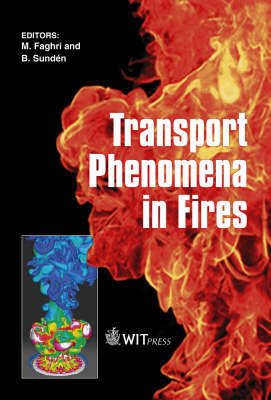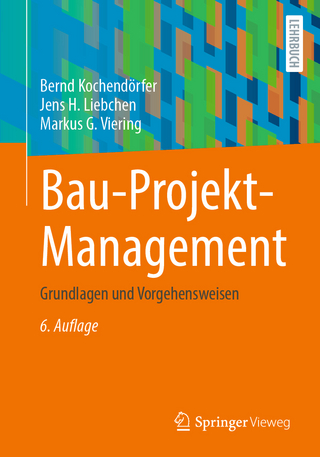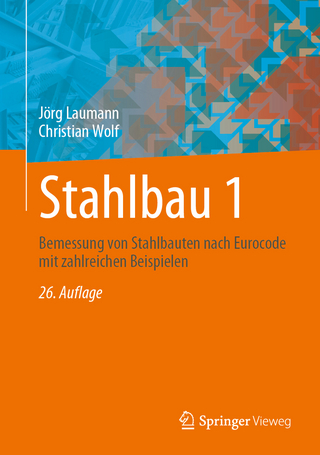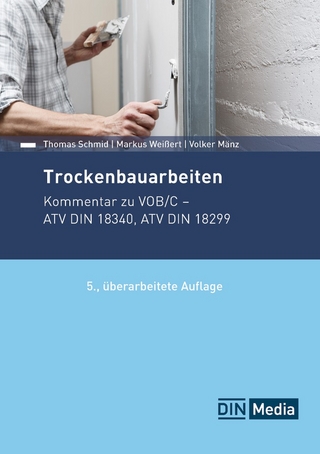
Transport Phenomena in Fires
WIT Press (Verlag)
978-1-84564-160-3 (ISBN)
- Keine Verlagsinformationen verfügbar
- Artikel merken
Controlled fires are beneficial for the generation of heat and power while uncontrolled fires, like fire incidents and wildfires, are detrimental and can cause enormous material damage and human suffering. This edited book presents the state-of-the-art of modeling and numerical simulation of the important transport phenomena in fires. It describes how computational procedures can be used in analysis and design of fire protection and fire safety. Computational fluid dynamics, turbulence modeling, combustion, soot formation, thermal radiation modeling are demonstrated and applied to pool fires, flame spread, wildfires, fires in buildings and other examples.
Dr. Mohammed Faghri is known around the world for his work in Computational Fluid Dynamics and for his experimental research on fluid flow and heat transfer in microscale devices. He has published over 200 articles in the journals of thermal sciences, including the ASME Journal of Heat Transfer, Numerical Heat Transfer and International Journal of Heat and Mass Transfer. Dr. Faghri is the author or editor of six books on heat exchangers, modeling of thermal processes, heat and fluid flow in microscale and nanoscale structures, heat transfer in gas turbines, modeling and simulation of turbulent heat transfer, and transport phenomena in fuel cells. He has been on the editorial boards of four journals (Journal of Heat Transfer Research, International Journal of Heat Exchangers, Int. J. of Dynamics of Fluids, International Journal of Science and Technology and the ASME Journal of Heat Transfer). He is the recipient of the 2004 ASME Heat Transfer Memorial Award (the most prestigious national award in the field of heat transfer), a Fellow of ASME and was selected as the Jubilee (150th Anniversary) Professor at the Chalmers University and Wenner-Gren Foundation Fellow at Lund Institute of Technology, both in Sweden. His sponsored research has been under the auspices of NSF, NASA, the US Army, IBM and Ford Motor Company. His research interests include microfluidics experiments and Direct Simulation Monte Carlo in micro-channels and solidification and melting in low gravity. He is currently the principal investigator of a NASA research grant for 460K on Phase Change in Low and Jittering Gravity Environment and the principal investigator and the project director of 2.37 million dollars NSF research grant for five years starting 2005 on Micro-fluidic Technology and Applications. Bengt Sunden has held positions at Chalmers University, Sweden as Research Associate, Docent and University lecturer. In 1992 he was appointed Professor of Heat Transfer at Lund University, Sweden, where he has taught undergraduate and graduate courses in heat and mass transfer, fluid mechanics, and numerical flow simulation and has supervised more than 135 masters' theses, 25 licentiate of Engineering theses, and21 doctoral theses. His research topics are: Enhancement of heat transfer in compact heat exchangers; numerical methods of convective flow and heat transfer in complex narrow geometries; combustion - related heat transfer; thermal imaging techniques; heat exchanger networks; and heat and mass transfer topics. He has had approximately 300 papers published in well-recognized journals, books and proceedings and has delivered several invited lectures and papers. He has been editor of thirteen books published by international publishers, is involved with referee work for than twentyfive international journals, and is the editor-in-chief of the International Journal of Heat Exchangers and the for a book series Developments in Heat Transfer. In addition, he is in the editorial board for another four journals. Professor Sunden is a fellow of ASMEand currently serves as associate editor of the prestigeous ASME Journal of Heat Transfer.
Chapter 1: Mathematical modelling and numerical simulation of fires Introduction; Turbulent combustion in fires; Simulation and modelling; Numerical method; Boundary conditions and wall treatment; Case study of upward flame spread over a PMMA board Chapter 2: Transport phenomena that affect heat transfer in fully turbulent fires Introduction; Length and time scales within a fire; Fluid dynamics within large fires; Scalar transport and radiative properties; Future of transport research in fires Chapter 3: Heat transfer to objects in pool fires Introduction; Historical modeling approaches; V&V as a foundation for predicting heat transfer to embedded objects in pool fires; Surrogate fuel formulation; Chemical kinetics for soot production from JP-8; Use of LES methods for pool fires; Combustion/reaction models; Turbulence/chemistry interactions; Radiative heat transfer model; Heat transfer to an embedded object in a JP-8 pool fire; Prediction of heat flux to an explosive device in a JP-8 pool fire; Predicting the potential hazard of an explosive device immersed in a JP-8 pool fire; Toward predictivity: error quantification and propagation; Summary Chapter 4: Heat and mass transfer effects to be considered when modelling the effect of fire on structures Introduction; Building fires; Methods of thermal analysis; The boundary condition; The compartment fire; Solid-phase phenomena; Conclusions Chapter 5: Weakly buoyant turbulent fire plumes in uniform still and crossflowing environments Introduction; Structure of steady plumes in still environments; Penetration of starting plumes in still environments; Penetration and concentration properties of startingand steady plumes in crossflows; Concluding remarks Chapter 6: Pyrolysis modeling, thermal decomposition, and transport processes in combustible solids Introduction; Pyrolysis modeling and fire modeling; Decomposition kinetics and thermodynamics; Heat, mass, and momentum transfer; Fire growth modeling; Concluding remarks Chapter 7: Radiative heat transfer in fire modeling Introduction; Radiative properties of combustion gases; Radiative properties of soot; Band models; Global models; Turbulence-radiation interactions; Summary Chapter 8: Thermal radiation modeling in flames and fires Introduction; Basic equations; Solution of the RTE; Radiation from flames; Radiation from fires; Summary Chapter 9: Combustion subgrid scale modeling for large eddy simulation of fires Introduction; LES mathematical formulation; Combustion SGS models; Summary Chapter 10: CFD fire simulation and its recent development Introduction; CFD simulation of conventional fire; CFD simulation of spontaneous ignition in porous fuel storage; Conclusions Chapter 11: The implementation and application of a fire CFD model Introduction; Turbulence modelling; Solution speed and stability; Accounting for energy; Liquid sprays; Boundary and initial conditions; The practice of modelling; Assessing the model, assessing the results; Examples; Conclusions Chapter 12: CFD-based modeling of combustion and suppression in compartment fires Introduction; Transient ignition and early fire growth; Smoke filling and pre-flashover fire spread; Flashover and transition to under-ventilated combustion; Water-based fire suppression and fire control/extinction; Conclusion
| Erscheint lt. Verlag | 28.2.2008 |
|---|---|
| Reihe/Serie | Developments in Heat Transfer ; No. 20 |
| Zusatzinfo | Illustrations |
| Verlagsort | Southampton |
| Sprache | englisch |
| Maße | 155 x 230 mm |
| Themenwelt | Technik ► Bauwesen |
| Technik ► Elektrotechnik / Energietechnik | |
| ISBN-10 | 1-84564-160-4 / 1845641604 |
| ISBN-13 | 978-1-84564-160-3 / 9781845641603 |
| Zustand | Neuware |
| Haben Sie eine Frage zum Produkt? |
aus dem Bereich


